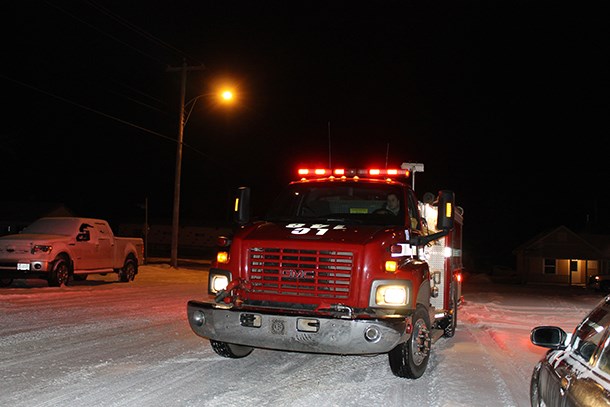Drivers need to remember that road condition warnings and other advisories are issued for a reason—and should be taken seriously by motorists. In a three-day period late last week, there were three fatal vehicle collisions on Highways 881 and 36 after freezing rain and snow made for treacherous road conditions. Throughout Alberta, there were several more fatal accidents, including one collision in the Leduc area that killed three people.
Drivers need to remember that road condition warnings and other advisories are issued for a reason-and should be taken seriously by motorists.
“We’ re not telling people to drive cautiously or to not drive at all just to say it,” said Cst. Chris Clark with the Lac La Biche RCMP. “We want to tell them, ‘You shouldn’ t be on the road because it’ s dangerous.’ And when you’ re out driving, you’ re putting yourself at risk, which obviously we can see by the huge number of fatalities across the province and in our area.”
In a three-day period late last week, there were three fatal vehicle collisions on Highways 881 and 36 after freezing rain and snow made for treacherous road conditions. Throughout Alberta, there were several more fatal accidents, including one collision in the Leduc area that killed three people.
The Lac La Biche RCMP issued multiple warnings and advisories, at times recommending that drivers stay off the highways altogether. Even so, emergency service crews responded to a “staggering” 25 vehicle collisions between Thursday night and Saturday night.
And when people choose to ignore the travel warnings, they should remember that others could be doing the same, which puts more people in harm’ s way.
“You’ re also putting the general public at risk, because maybe it’ s you that causes a collision and you’ re now taking somebody else’ s life,” he said, adding that more traffic on poor roads also poses greater dangers for the emergency crews called out to crash scenes.
Police, fire, ambulance and road crews who attend collision scenes also faced more risk because motorists chose to ignore travel advisories.
“As emergency re--sponders, we’ re the same people responding to all of these different collisions,” Clark said, adding that there were times when the responders had no choice but to work in unsafe situations. “We’ re now out there, having to work on the side of the highway. We’ re trying to tend to people, we’ re trying to preserve life, we’ re trying to conduct an investigation-and we have a lineup of traffic and people that aren’ t slowing down. Now the risk of one of us getting injured or killed is increased.”
Other motorists are a concern for responders, but so are the road conditions. Just because they have flashing lights doesn’ t mean emergency vehicles react much differently to treacherous road conditions.
In one instance last week, a firefighter suffered minor injuries after crashing a fire truck on the way to a collision scene. With the calls continuing to come in, the firefighter continued working for some time before being transported to hospital.
The sheer volume of high-pressure calls left responders fatigued, Clark says.
“It has an operational impact as well as an emotional impact on our officers, on the fire crews and on EMS crews,” he said. “Our fire department is made up of volunteers, so we’ re taxing them to the limit by having them respond continuously to all of these collisions. It ends up burning everybody out after a weekend with hardly any sleep.”
As road conditions worsened last week, emergency service crews sometimes found their path blocked by jackknifed tractor-trailers, but some of the vehicles that were still in motion became barriers of a different sort.
“We’ re trying to get (to a collision scene) and we’ ve got people who aren’ t pulling over,” Clark told the POST. “That makes it unsafe for us to pass them. When you see those emergency lights, you need to stop on the right-hand side and allow that emergency vehicle to pass, not keep driving at 100 kilometres per hour.”
In some instances, drivers tell police they don’ t want to be held up by crash scenes, so they don’ t pull over.
“We’ ve had lots of people tell us they know that if they beat the police to the scene, they’ ll get through,” Clark said. “You know what? You shouldn’ t be racing a police car or a fire truck or an ambulance. They’ re going to be protecting your safety in the end-and somebody’ s life is potentially in jeopardy.”
One of the first and simplest things motorists can do is take the authorities’ warnings and advisories seriously rather than place themselves and others in risky situations unnecessarily, said Clark.
